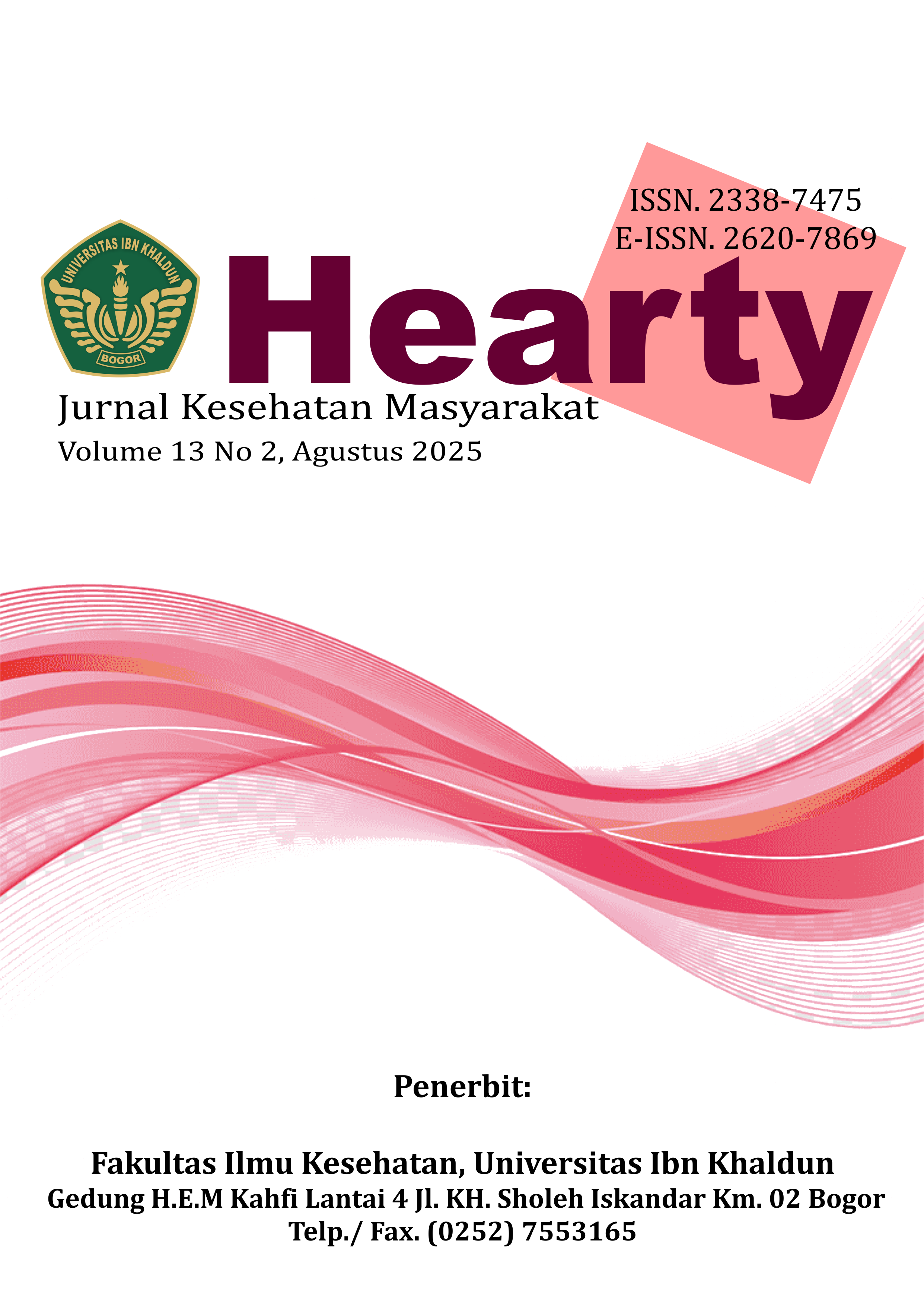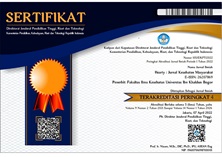THE EFFECT OF KEGEL EXERCISE ON REDUCING PAIN INTENSITY OF DYSMENORRHEA IN ADOLESCENT WOMEN
DOI:
https://doi.org/10.32832/hearty.v13i2.16087Abstrak
Background: Dysmenorrhea or menstrual pain is a gynecological complaint due to an imbalance of the hormone progesterone in the blood. The degree of pain varies, from mild to severe. Severe pain conditions can interfere with daily activities. One therapy to overcome the problem of menstrual pain is Kegel exercises or Kegel exercises, which are pelvic floor muscle exercises. Objective: To determine the effect of Kegel exercises on reducing the intensity of dysmenorrhoea pain in young women at MTs Al-Anwar Raman Agung, South Sumatra in 2023. Method: This research is quasi-experimental with one group pretest and posttest design. The sample in this study was 60 young women at MTs Al-Anwar Raman Agung South Sumatra in 2023 who were divided into two groups, namely the group who did Kegel exercises and the group who did not do Kegel exercises. Dysmenorrhea pain is measured using the Numeric Rating Scale (NRS). Data analysis used the Mann Whitney test. Results: The degree of dysmenorrhea pain experienced by the treatment group was 27 (90%) moderate pain levels and 29 respondents (96.7%) experienced moderate pain levels in the control group and 16 respondents (53.3%) after doing Kegel exercises experienced moderate pain . . %) and the control group experienced moderate pain as many as 27 respondents (90%). Conclusions and suggestions: There is a difference in the intensity of pain reduction in the group who did Kegel exercises compared to the group who did not do Kegel exercises in young women at MTs Al-Anwar Raman Agung, South Sumatra with p value = 0.005.
























